 W
WThe 2nd Queen Victoria's Own Rajput Light Infantry, commonly shortened to 2nd Rajputs, was a regiment of the British Indian Army. Raised in 1798, it was amalgamated with five other Rajput regiments in 1922.
 W
WThe 13th Infantry Regiment is a United States Army infantry regiment whose battalions are currently tasked as basic training battalions.
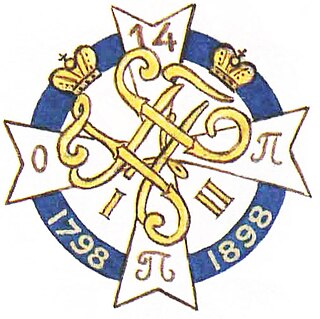 W
WThe 14th Olonets Infantry Regiment was an infantry regiment of the Russian Empire's Imperial Russian Army. It took part in wars against the Ottoman Empire and the First French Empire (1813–1814), as well as conflicts in Poland, Hungary (1849) and the Crimea.
 W
WThe 89th Punjabis was an infantry regiment of the British Indian Army raised in 1798 as a battalion of Madras Native Infantry. It was designated as the 89th Punjabis in 1903 and became 1st Battalion 8th Punjab Regiment in 1922. In 1947, it was allocated to Pakistan Army, where it continues to exist as 1st Battalion, The Baloch Regiment.
 W
WThe Ayrshire Yeomanry was a Regiment of the British Yeomanry and is now an armoured Squadron of the Scottish and North Irish Yeomanry (SNIY), part of the British Army Reserve. It is the Lowlands of Scotland's only Royal Armoured Corps Unit and has an unbroken history stretching back to the 1790s.
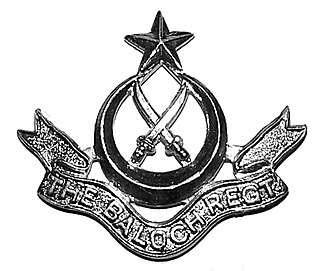 W
WThe Baloch Regiment is an infantry regiment of the Pakistan Army. The modern regiment was formed in May 1956 by the merger of 8th Punjab and Bahawalpur Regiments with the Baluch Regiment. Since then, further raisings have brought the strength of the Regiment to 57 active battalions. The Baloch Regiment is descended from the infantry of the old British Indian Army and is named after Balochistan. Before 1991, it was called the Baluch Regiment but the spelling was changed to 'Baloch' to better reflect the correct pronunciation.
 W
WThe North Somerset Yeomanry was a part-time cavalry regiment of the British Army from 1798 to 1967. It maintained order in Somerset in the days before organised police forces, and supplied volunteers to fight in the Second Boer War. It served on the Western Front in World War I. At the outbreak of World War II it continued to operate in the mounted role, and then as a specialist signals unit. Postwar it joined the Royal Armoured Corps and later became infantry. Its lineage today is maintained by 93 Squadron 39 (Skinners) Signal Regiment.
 W
WThe Hampshire Yeomanry was a yeomanry cavalry regiment formed by amalgamating older units raised between 1794 and 1803 during the French Revolutionary Wars. It served in a mounted role in the Second Boer War and World War I, and in the air defence role during and after World War II. The lineage is continued by 295 Battery and 457 Battery, batteries of 106 (Yeomanry) Regiment Royal Artillery, part of the Army Reserve.
 W
WThe Hampshire Yeomanry was a yeomanry cavalry regiment formed by amalgamating older units raised between 1794 and 1803 during the French Revolutionary Wars. It served in a mounted role in the Second Boer War and World War I, and in the air defence role during and after World War II. The lineage is continued by 295 Battery and 457 Battery, batteries of 106 (Yeomanry) Regiment Royal Artillery, part of the Army Reserve.
 W
WThe Duke of Lancaster's Own Yeomanry was a British Army regiment that existed from 1798 to 1992. The regiment sent mounted infantry for service in the Second Boer War as the Imperial Yeomanry, between 1900 and 1902, and also saw action during the First and Second World Wars. Its lineage is maintained by B Squadron, the Queen's Own Yeomanry.
 W
WThe Hampshire Yeomanry was a yeomanry cavalry regiment formed by amalgamating older units raised between 1794 and 1803 during the French Revolutionary Wars. It served in a mounted role in the Second Boer War and World War I, and in the air defence role during and after World War II. The lineage is continued by 295 Battery and 457 Battery, batteries of 106 (Yeomanry) Regiment Royal Artillery, part of the Army Reserve.
 W
WThe Essex Yeomanry was a Reserve unit of the British Army that originated in 1797 as local Yeomanry Cavalry Troops in Essex. Reformed after the experience gained in the Second Boer War, it saw active service as cavalry in World War I and as artillery in World War II. Its lineage is maintained by 36 Signal Squadron, part of 71 (Yeomanry) Signal Regiment, Royal Corps of Signals.
 W
WThe Hampshire Yeomanry was a yeomanry cavalry regiment formed by amalgamating older units raised between 1794 and 1803 during the French Revolutionary Wars. It served in a mounted role in the Second Boer War and World War I, and in the air defence role during and after World War II. The lineage is continued by 295 Battery and 457 Battery, batteries of 106 (Yeomanry) Regiment Royal Artillery, part of the Army Reserve.
 W
WThe North Somerset Yeomanry was a part-time cavalry regiment of the British Army from 1798 to 1967. It maintained order in Somerset in the days before organised police forces, and supplied volunteers to fight in the Second Boer War. It served on the Western Front in World War I. At the outbreak of World War II it continued to operate in the mounted role, and then as a specialist signals unit. Postwar it joined the Royal Armoured Corps and later became infantry. Its lineage today is maintained by 93 Squadron 39 (Skinners) Signal Regiment.
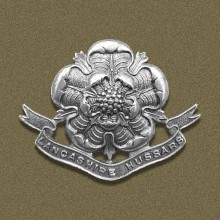 W
WThe Lancashire Hussars was a British Army unit originally formed in 1798. It saw action in the Second Boer War, the First World War and the Second World War. In 1969, the regiment reduced to a cadre and the Yeomanry lineage discontinued.
 W
WThe North Somerset Yeomanry was a part-time cavalry regiment of the British Army from 1798 to 1967. It maintained order in Somerset in the days before organised police forces, and supplied volunteers to fight in the Second Boer War. It served on the Western Front in World War I. At the outbreak of World War II it continued to operate in the mounted role, and then as a specialist signals unit. Postwar it joined the Royal Armoured Corps and later became infantry. Its lineage today is maintained by 93 Squadron 39 (Skinners) Signal Regiment.
 W
WThe Mississippi Army National Guard is the Army National Guard component of the Mississippi National Guard. It was originally formed in 1798. It is a component of the United States Army and the United States National Guard. It is managed by the Mississippi Military Department.
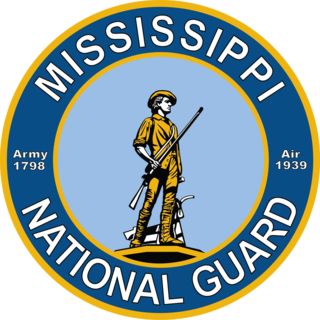 W
WThe Mississippi National Guard (MSNG), commonly known as the Mississippi Guard, is both a Mississippi state and a federal government organization, part of the United States National Guard. It is part of the Mississippi Military Department, a state agency of the government of Mississippi. The Adjutant General of Mississippi (TAG), Major General Janson Durr Boyles, serves as the executive director and is subordinate to the Commander-in-Chief, the Governor of Mississippi, in matters relating to the department and the state militia forces.
 W
WThe National Congress Battalions, also known as the Truppe di Campagna, was an irregular military set up in Malta just after the Maltese rebellion against French rule in September 1798. It existed for two years before being disbanded on 11 September 1800.
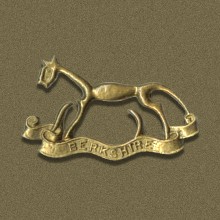 W
WThe Berkshire Yeomanry was an auxiliary regiment of the British Army formed in 1794 to counter the threat of invasion during the French Revolutionary Wars. It was the Royal County of Berkshire's senior volunteer unit with over 200 years of voluntary military service. After taking part in the Second Boer War, it saw action as mounted troops in the First World War and as artillery in the Second World War. Its lineage is maintained by 94 Signal Squadron, part of 39 (Skinners) Signal Regiment. The Headquarters of the Squadron is based in Windsor, Berkshire. The Berkshire Yeomanry had a number of battle honours won from Europe to the Far East and Private Frederick Potts was awarded a Victoria Cross for service during the Gallipoli Campaign.
 W
WThe North Somerset Yeomanry was a part-time cavalry regiment of the British Army from 1798 to 1967. It maintained order in Somerset in the days before organised police forces, and supplied volunteers to fight in the Second Boer War. It served on the Western Front in World War I. At the outbreak of World War II it continued to operate in the mounted role, and then as a specialist signals unit. Postwar it joined the Royal Armoured Corps and later became infantry. Its lineage today is maintained by 93 Squadron 39 (Skinners) Signal Regiment.
 W
WThe Hampshire Yeomanry was a yeomanry cavalry regiment formed by amalgamating older units raised between 1794 and 1803 during the French Revolutionary Wars. It served in a mounted role in the Second Boer War and World War I, and in the air defence role during and after World War II. The lineage is continued by 295 Battery and 457 Battery, batteries of 106 (Yeomanry) Regiment Royal Artillery, part of the Army Reserve.
 W
WThe North Somerset Yeomanry was a part-time cavalry regiment of the British Army from 1798 to 1967. It maintained order in Somerset in the days before organised police forces, and supplied volunteers to fight in the Second Boer War. It served on the Western Front in World War I. At the outbreak of World War II it continued to operate in the mounted role, and then as a specialist signals unit. Postwar it joined the Royal Armoured Corps and later became infantry. Its lineage today is maintained by 93 Squadron 39 (Skinners) Signal Regiment.
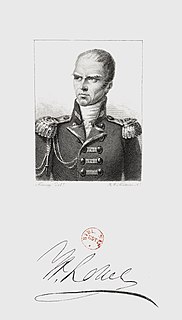 W
WThe Royal Corsican Rangers was a unit of the British Army, composed mainly of Émigrés, which served during the later part of the French Revolutionary Wars and throughout the Napoleonic Wars.
 W
WThe Essex Yeomanry was a Reserve unit of the British Army that originated in 1797 as local Yeomanry Cavalry Troops in Essex. Reformed after the experience gained in the Second Boer War, it saw active service as cavalry in World War I and as artillery in World War II. Its lineage is maintained by 36 Signal Squadron, part of 71 (Yeomanry) Signal Regiment, Royal Corps of Signals.
 W
WThe United States Marine Band is the premier band of the United States Marine Corps. Established by act of Congress on July 11, 1798, it is the oldest of the United States military bands and the oldest professional musical organization in the United States. Today, the Marine Band also includes the Marine Chamber Orchestra and Marine Chamber Ensembles.
 W
WThe Hampshire Yeomanry was a yeomanry cavalry regiment formed by amalgamating older units raised between 1794 and 1803 during the French Revolutionary Wars. It served in a mounted role in the Second Boer War and World War I, and in the air defence role during and after World War II. The lineage is continued by 295 Battery and 457 Battery, batteries of 106 (Yeomanry) Regiment Royal Artillery, part of the Army Reserve.
 W
WThe Hampshire Yeomanry was a yeomanry cavalry regiment formed by amalgamating older units raised between 1794 and 1803 during the French Revolutionary Wars. It served in a mounted role in the Second Boer War and World War I, and in the air defence role during and after World War II. The lineage is continued by 295 Battery and 457 Battery, batteries of 106 (Yeomanry) Regiment Royal Artillery, part of the Army Reserve.
 W
WThe North Somerset Yeomanry was a part-time cavalry regiment of the British Army from 1798 to 1967. It maintained order in Somerset in the days before organised police forces, and supplied volunteers to fight in the Second Boer War. It served on the Western Front in World War I. At the outbreak of World War II it continued to operate in the mounted role, and then as a specialist signals unit. Postwar it joined the Royal Armoured Corps and later became infantry. Its lineage today is maintained by 93 Squadron 39 (Skinners) Signal Regiment.
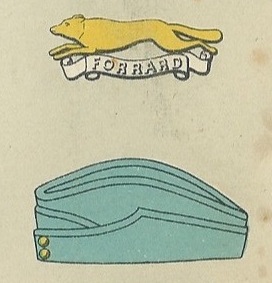 W
WThe East Riding of Yorkshire Yeomanry was a unit of the British Army formed in 1902. Units of Yeomanry Cavalry were raised in the East Riding of Yorkshire in the 18th and early 19th centuries at times of national emergency: the Jacobite Rising of 1745, the French Revolutionary Wars and the Napoleonic Wars. These were stood down once each emergency was over. The East Riding of Yorkshire Yeomanry, was established in 1902, and this saw action during the First World War both in the mounted role and as machine gunners.